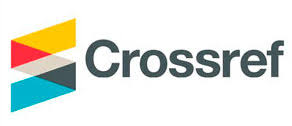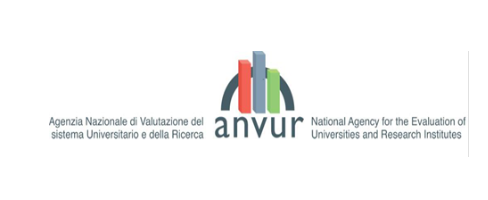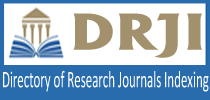ECONOMETRIC ASSESSMENT OF THE IMPACT OF ECONOMIC INDICATORS ON THE NON-OBSERVED ECONOMY OF MOLDOVA
DOI:
https://doi.org/10.36004/nier.es.2022.1-01Keywords:
non-observed economy; informal economy; economic indicators; regression analysis; economic and mathematical modeling; influence factors; single equation models.Abstract
The non-observed economy is an integral part of the modern economic system. It is a threat to economic security in conditions of slow stagnation. The relevance of this study lies in the fact that the identification of factors influencing the non-observed economy makes it possible to develop proposals to combat this phenomenon. Also, this paper describes the problems that researchers in the Republic of Moldova face when econometrically modeling the dependence of the non-observed economy on socio-economic indicators. The novelty and purpose of the study is the construction of models with one equation, where the endogenous variable is the level of the non-observed economy in value terms and the share of the non-observed economy in Gross Domestic Product. The main research methods are regression analysis and economic and mathematical modeling. At the first step of the study, the identified main factors of influence that determine the size of the shadow economy in twenty-eight countries were systematized. In the next step, the authors established the available series of statistical data published by the National Bureau of Statistics and determined exogenous variables. The authors used the program for econometric analysis EViews 9 in constructing the models. The single equation models were tested inclusively for first and second-order autocorrelation and heteroscedasticity. The constructed models showed that the non-observed economy is positively affected by the growth of the main sectors of the national economy and by an increase in the unemployment rate. While the rise in foreign trade turnover, namely imports, negatively affects the endogenous variable. There is an identical (negative) relationship between the freight turnover and the level of the non-observed economy.
Downloads
References
ACCA. (2017). Emerging from the shadows: The shadow economy to 2025. London: The Association of Chartered Certified Accountants.
Antunes, A., Cavalcanti, T., & Villamil, A. (2008). The effect of financial repression and enforcement on entrepreneurship and economic development. Journal of monetary economics, 55(2), 278–297. https://doi.org/10.1016/j.jmoneco.2007.10.006
Costandachi, G. (2016). Gestionarea cuantificării economiei tenebre în scopul organizării eficiente a finanțării sferei sociale. In: Economic Growth in Conditions of Globalization: international Conference on Theoretical and Applied Economic Practices (Vol. 2, pp. 230-235). Chișinău: NIER.
Elgin, C., & Birinci, S. (2016). Growth and informality: a comprehensive panel data analysis. Journal of Applied Economics, 19 (2), 271-292. https://doi.org/10.1016/S1514-0326(16)30011-3
Elgin, C., & Oztunali, O. (2012). Shadow economy all around the world: Model based estimates. Working Paper, 05, 1-48. Bogazici University Economics Department. http://ideas.econ.boun.edu.tr/RePEc/pdf/201205.pdf
Ganciucov, V., & Gutium, T. (2015). Adaptarea modelului balanţei interramurale natural-valorile pentru evaluarea economiei neobservate. Vector European, 1, 36-40.
Kaufmann, D., & Kaliberda, A. (1996). Integrating the unofficial economy into the dynamics of post socialist economies: A framework of analyses and evidence. In: B. Kaminski (Ed.), Economic Transition in Russia and the New States of Eurasia (pp. 81-120). London: M. E. Sharpe.
Loayza, N., Oviedo, A., & Serven, L. (2004). Regulation and macroeconomic performance. Policy Research Working Paper, 3469, 1-44. Washington: World Bank.
Massenot, B., & Straub, S. (2016). Informal Sector and Economic Development: The Credit Supply Channel. Economic Inquiry, 54(2), 1046-1067. https://doi.org/10.1111/ecin.12301
Medina, L., & Schneider, F. (2018). Shadow economies around the world: what did we learn over the last 20 years? IMF Working Papers, 17, 1-76.
Schneider, F., & Kearney, A. (2013). The shadow economy in Europe. Linz: Johannes Kepler Universitat.
StatBank. (2022). Statistical databank. National Bureau of Statistics of the Republic of Moldova. https://statistica.gov.md/pageview.php?l=en&idc=407
Tanzi, V. (1983). The underground economy in the United States: annual estimates, 1930-80. International Monetary Fund Staff papers, 30(2), 283-305.
UNDP. (2021). Fenomenul economiei și ocupării informale în contextul pandemiei Covid-19. Centrul Analitic Independent „Expert Grup”.
Williams, C. (2014). Confronting the shadow economy: Evaluating tax compliance and behaviour policies. Cheltenham: Edward Elgar Publishing.
Żukauskas, V. (2015). Strategies for Combating the Shadow Economy. 4liberty.eu Review, 3, 140-151.
Дробот, Е., & Макаров, И. (2021). Оценка факторов и стрессоров теневой экономики: мировой опыт. Теневая экономика, 5(1), pp. 53-77. https://doi.org/10.18334/tek.5.1.112236
Реутов, В., & Кифяк, А. (2021). Факторы влияния теневой составляющей на экономику региона. Экономика и управление, 2021, 7(73), 3, 94-105.
Суслина, А., & Леухин, Р. (2016). Борьба с теневой экономикой в России: частные аспекты общих проблем. Финансовый журнал, 6, 46-61.















